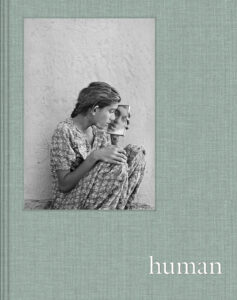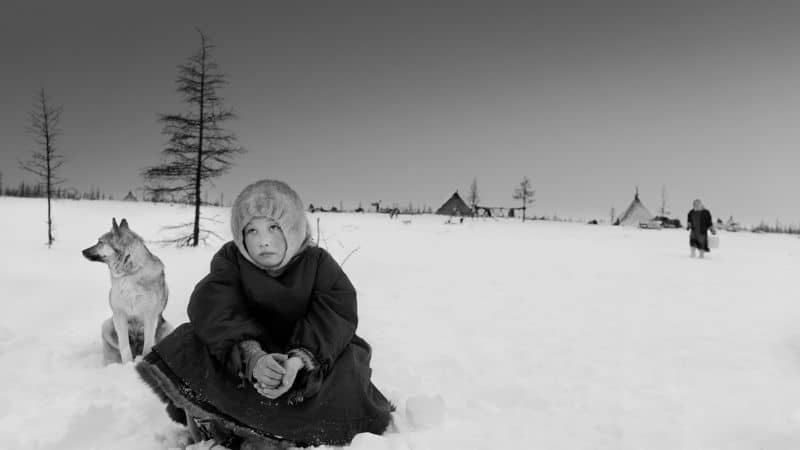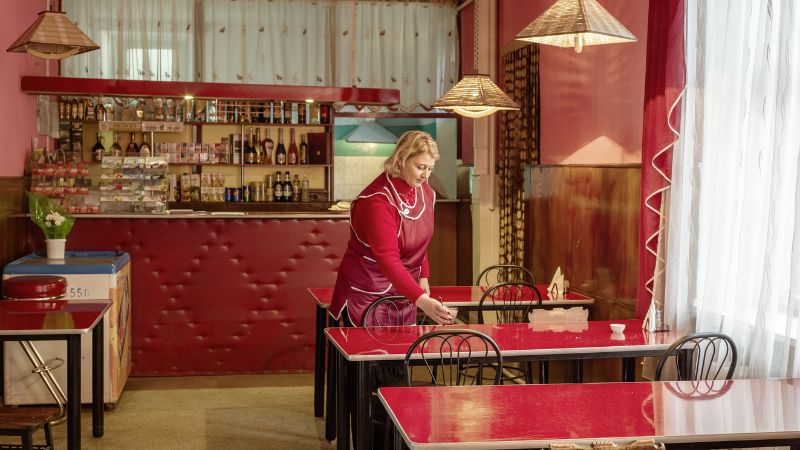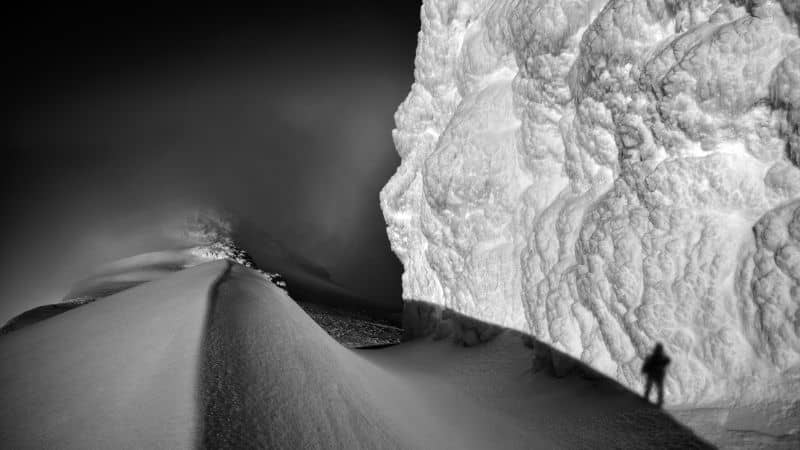Who is this girl with the bleak mirror looking away?
I Rorschach (verb); haruspicate the intestines of the clouds. I see no hope. Something stirs as I ‘read’ the cover photo of Human: Andrew Wyeth’s Christina’s World comes to mind. Something darker is conjured up: Dorothy Lange’s Migrant Mother of the Dust Bowl era. Who is this girl with the mirror, head tilted as if listening to a portable radio playing the Delta Blues?

The girl is not facing the camera;; we see a fraction of her face only through the mirror. The mirror is, seemingly, the focus-locus of the frame. Mirrors are ancient. The mirror is one of the oldest human inventions, dating back to at least 6000 BC. That means mirrors are at least 8000 years old. The earliest mirrors were made of polished obsidian. They have been used for grooming and magic. And for old reflex cameras. Today, you can use your webcam as a mirror. Look how far we’ve come.
The girl is Jannat (1999 – 2007). She is one subject in a collection of frames by Delhi-based photographer Gauri Gill, who toured villages in India, visiting schools, in 1999 (ongoing) and, in a village called Barmer, came across Jannat and her family, and Gill decided to chronicle their plight. On her website, Gill notes: «This series — which includes photographs and textual artifacts — is based upon the life of a young girl (Jannat) and her small and imperiled family of three, living in a remote hamlet in rural Rajasthan.» Gill has exhibited within India and internationally. In 2011, Gill won the Grange Prize, Canada’s foremost award for photography.

Gill’s experience has been extensive, elaborate, and varied. In her Pictet artist’s statement for Notes from the Desert, from which Jannat is drawn, she writes, «I have followed the farming cycle, migration, men traveling to work in Gujarat and Maharashtra, Food for Work programmes, MNREGA and other government schemes, nomadic journeys, epidemics, cerebral malaria, tuberculosis, overwhelmed hospitals, and understaffed schools, death from snakebite, from accidents, from being burned alive for providing an inadequate dowry, from growing old, the death of a camel in a year remembered as the year of the death of the camel, births, marriages, child marriages, moneylenders, dharnas, national and panchayat elections, festivals, feuds passed down over generations, celebrations, prayers … and, through it all, my friends, by whom I was led.» She describes her work as not so much journalism or cataloging but as being there with «active listening.»
Who is this girl with the mirror, head tilted as if listening to a portable radio playing the Delta Blues?
Jannat with the mirror is the cover image of Human, a collection of 100 images competing for Prix Pictet’s top photography award for 2023. The book is published by the Pictet Group, whose mission is «to harness the power of photography – all genres of photography – to draw global attention to issues of sustainability, especially those concerning the environment.» The award is theme-based, and past foci have included: Fire (2021), Hope (2019), Space (2017), Disorder (2016), Consumption (2015), Power (2014), Growth (2010), Earth (2010), Water (2008). Humans are composed mostly of water, so it makes sense to begin there and discuss and depict that crisis first.

Human, the 10th cycle, is intent on taking stock of our doings, cumulatively, at a time when the meaning of being human in the Anthropocene era has never been more crucial to an understanding of how humans will survive into the future. We have not a crisis in the humanities but crises. Hello?
Pictet tells us, «As the most dominant species on Earth, humans shape and are shaped by the world around us. The Human theme allows photographers to delve into the vast spectrum of human experiences, emotions, relationships, and challenges that define our collective existence.» Publisher Hatje Cantz adds, «It would be easy to read the human story as one of tragic hubris. Yet it does not end here. We stand on the threshold of the future, wondering which way the dice will fall. Our wager with posterity is that human ingenuity, intelligence, and resilience of spirit are powerful enough to insist upon a very different future for the human story.»
Human is chock full of the varied and tangled up stories of what people get up to in their lives in a changing world. Each photograph tells a still-developing story. Each reader will find favorite visual frames that pique, intrigue, call into question, astonish, or remind one of our common ground and ancient origins. I was enamored of Yael Martínez images of fireflies that conjured up magical realism and mysticism; Andrea Diefenbach’s Moldova where, writes the artist, «The tempo of everyday life … oscillates between departure and stagnation;» Ragnar Axelsson’s astonishing frames from Where the World is Melting, including dark fjords in Greenland and locals tangling with the wildlife of Siberia; and, Monica Alcázar-Duarte’s bold confrontations with the future now in Visualizing the Algorithm.

Human includes essays from David Christian, Meehan Crist, and Michael Benson (talking with Sebastião Salgado). In Humans on the Edge, Christian worries about our growing estrangement from the biosphere. He writes, «But humans are also very, very strange. Indeed, by some criteria, we are the strangest species ever to have appeared on Earth. The best measure of our strangeness is our power over other species and the oceans, continents, and atmosphere of our home planet.» Strange, indeed. And he wonders aloud, «Are we clever and caring enough to avoid catastrophe and build a future in which our ancestors may thrive and flourish far into the future?»
In The Power of Humility, Crist ponders sustainability and our blithe posture regarding the salvation value of new technologies. He writes, «For those among us for whom the status quo is a bleak and barbarous place, the idea that nothing but technology will change in the future provides no such locus of hope. In the face of such a worldview, one cannot help but wonder about how to define ‘nature’ and ‘needs.’»
In Michael Benson’s piece, The Victor Hugo de nos jours, Sebastião Salgado tells the writer how he transitioned from being a luster lackey for the World Bank to a fledgling but urgent photographer, supported by his young, beautiful architect wife. Salgado explains how he went on all his fact-finding tours with his camera. He tells Benson, «When I went to Rwanda, I took my camera. Coming back to London, the pictures I made there gave me ten times more pleasure than the economic report I had to write. Just after that, I went on trips to Burundi and the Congo, and the same thing happened when I came back… huge enthusiasm. Photography was slowly becoming my inspiration, my obsession.» If only everyone would quit the World Bank and start chronicling with snapshots of our collective demise!
The Prix Pictet exhibit featuring the photos of Human just closed in London but is now going on a worldwide tour. The Human Tour will then travel to Nassau and Singapore, among other locations. You can do a virtual tour of the London exhibit at the Prix Pictet website.



